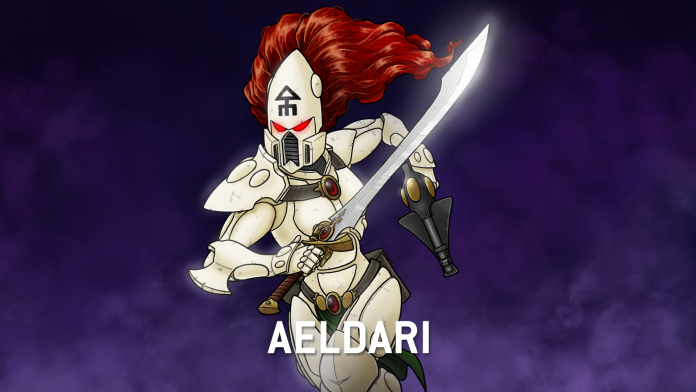In this article series we’re taking a look at the leader options available to each faction, looking at what units they pair with, and talking about the combos available to those units as well as tips for running them solo. You can find our Competitive Faction Focus article on the Aeldari here. For this piece we are joined by Quinton Johnson, Art of War’s resident elf expert, who leads us through the analysis with his inaugural Goonhammer article.
The Aeldari have long been a heavily character-driven faction and as a result have a wide array of options within their current index. In breaking down these options we’ll first begin by reviewing the Phoenix Lords who are restricted to their respective shrines for Bodyguard options before diving into the more expansive listing of Epic and non-Epic heroes that comprise the current index set. We will not review the Avatars in this entry, for more on them please see the Competitive Faction Focus.
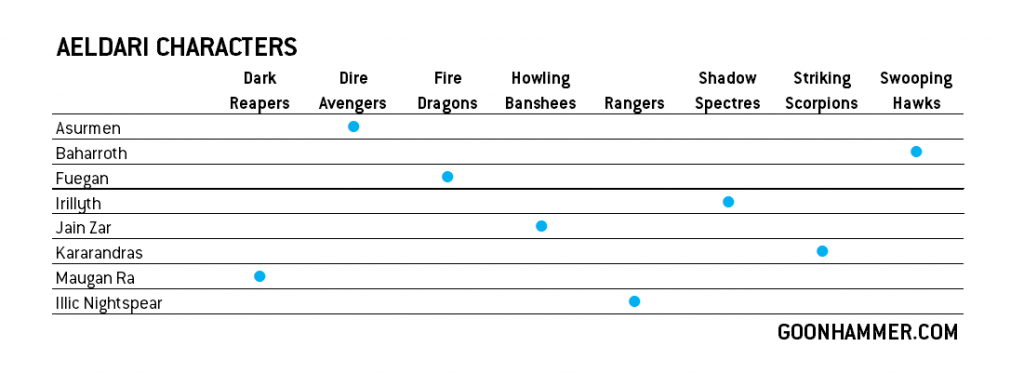
The Phoenix Lords
These heroes of Aeldari myth share several abilities and characteristics. They’re all toughness 3, 5-wound elf leaders with a 2+/4++ (except for Asurmen). Each of the Phoenix Lords can only join their respective shrines, and they all provide their unit with a +1 to hit. All are Epic Heroes and thus cannot be given Enhancements.
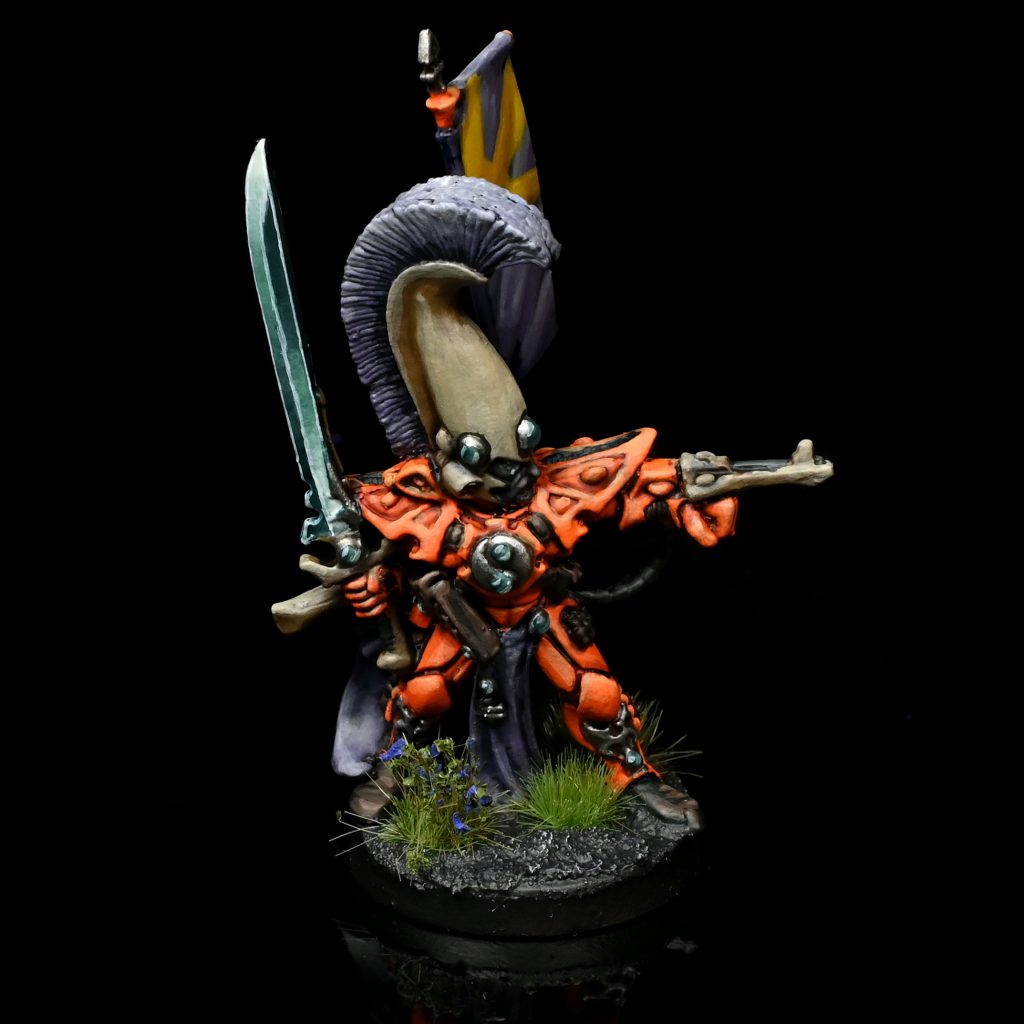
Asurmen
The elf king himself. This bad boy is still rocking his late 90’s style (as most of the Phoenix Lords still do). But old school is still cool, and Asurmen can still make a proper showing for himself on the tabletop. He’s the best generalist among the Phoenix Lords, owing to his 3++ and his competency in both phases. His +1 to hit really goes a long way for dire avengers and their volume of shots. His unique rule is also pretty cool.
- Tactical Acumen: Once per turn, you can target this model’s unit for the Overwatch stratagem for 0CP, even if you’ve already used it. This synergizes very well with Dire Avenger’s native ability to fire overwatch on 4s.
Offensively, the old dog still bites. In shooting, he’s got the second-best Shuriken catapult in the game with The Bloody Twins (after Lord Inquisitor Kyria Draxus) but still has 6 attacks at damage 2. In combat, his Sword of Asur gives him flat damage 3 as well as devastating wounds. He won’t be cleaving tanks apart, but he’s outstanding into medium/heavy infantry with three wounds like Chosen and Inceptors.
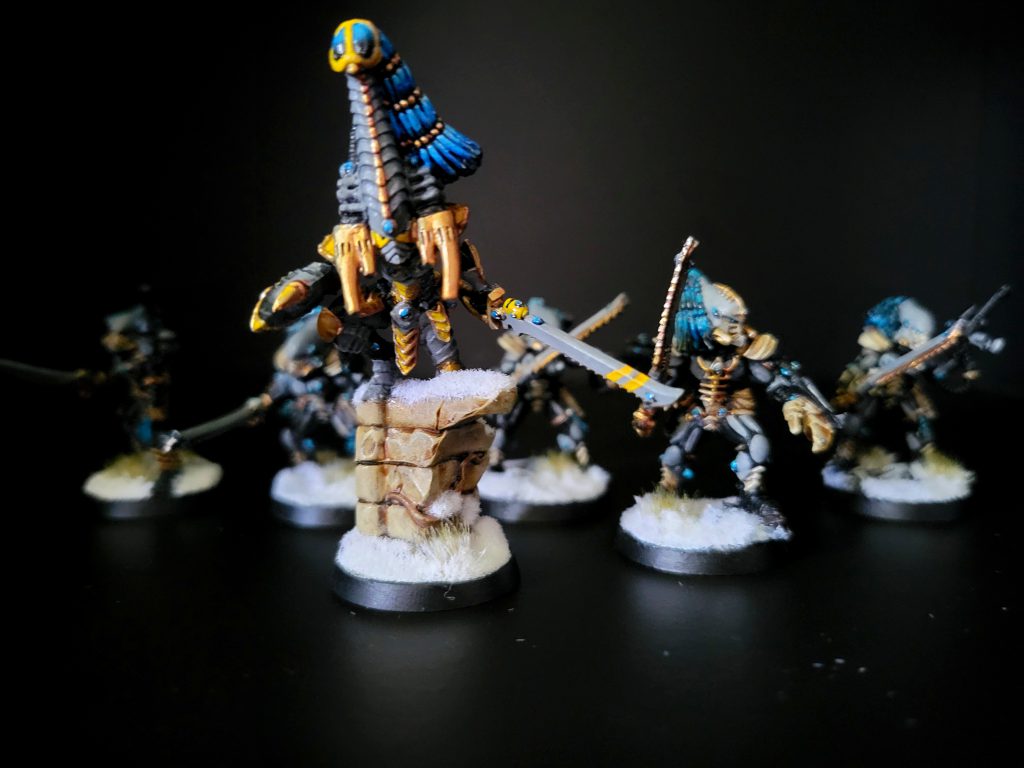
Karandras
Uncle K strikes from the shadows and lunges straight for my heart. The best melee fighter of all the Phoenix Lords, he’s the only one to come with both a sweep and strike option. Like his shrine, he infiltrates, so putting him with a unit in a mid-field ruin early is a good option. He’s not bad as a solo unit if you want something to go and chop up some Space Marines, but giving him five friends isn’t a bad choice.
- Sustained Assault: Each time this model makes a melee attack, if it made a charge move, a successful hit roll of 4+ scores a critical hit. This is outstanding on his main weapons, which both have sustained hits. It means that he averages 7 or 8 hits with his 5 attacks, and more if you’re able to guide him.
- The Scorpion’s Blade: His melee weapons have Devastating Wounds when not targeting a Titanic model. Useful as it works into vehicles, unlike Striking Scorpions.
Karandras has an okay gun, but the real reason you take him is combat. The Arhra’s Bane has 5 attacks that are good against marines, while Isirmathil comes with 8 attacks that are amazing into light infantry. Generally, he’s not going to be kick-flipping Land Raiders, but he’s scary enough into most light targets.
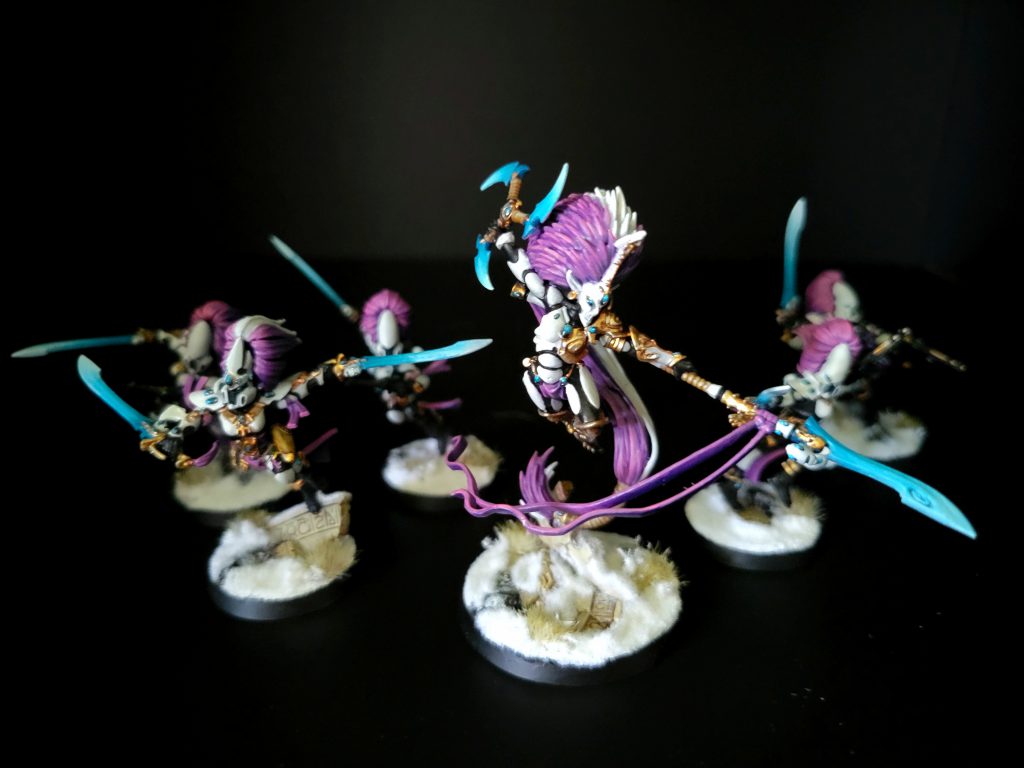
Jain Zar
Sadly, the coolest-looking Phoenix Lord does not have rules to back her up. She can only join Howling Banshees, which are the worst of the Aspects, and her rules don’t do much to help their anemic damage output. She doesn’t do much damage herself, either.
- Whirling Death: Once per turn you can target this model’s unit with the Heroic Intervention Stratagem for 0CP and can do so even if another unit has used it this phase. How often does your Aeldari army heroic twice? Why would you want to do it with Banshees? Fights first is a nice rule to have with this, but she’ll rarely do enough once she’s in to justify the expensive points cost.
Jain Zar does advance and charge when she’s joined to Banshees, and does actually have a legitimate output against light infantry. Both her ranged weapon, The Silent Death and her Blade of Destruction’s sweep profile have a high volume of attacks. If you’re struggling to kill something like gargoyles, she’s not terrible, but if you need to kill anything harder (and in most games you do), Karandras is a far better pick.
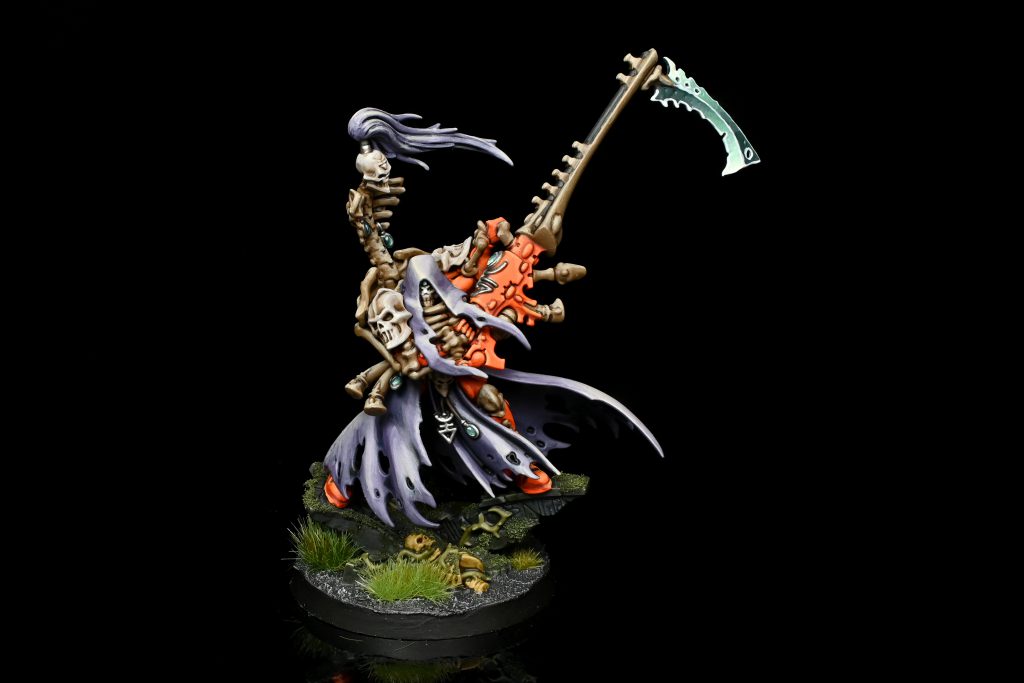
Maugan Ra
We-have-Death-Jester-At-Home retains his 9th edition crown as the most forgettable Phoenix Lord. While Dark Reapers are still sitting in time out, he doesn’t actually synergize with them all that well and doesn’t do anything that another character won’t do better. For all his shortcomings, he is also one of the most expensive Phoenix lords, just under Asurmen.
- Face of Death: Each time this model targets a unit that is below half-strength, you can reroll the hit and wound roll. This is an ability Games Workshop adds a lot, but it rarely comes up. Units tend to exist either undamaged, or dead. If a unit is close to dying, generally it’s not hard to push it over the edge. If it was against units at full strength, or if it applied to his whole unit, it would be a different story.
The Maugetar, which supposedly once held off an entire Hive Fleet, is basically two really good shuriken cannons glued together that gained devastating wounds but lost sustained hits. In combat, he’s more or less a space marine captain. Not worth his points cost.
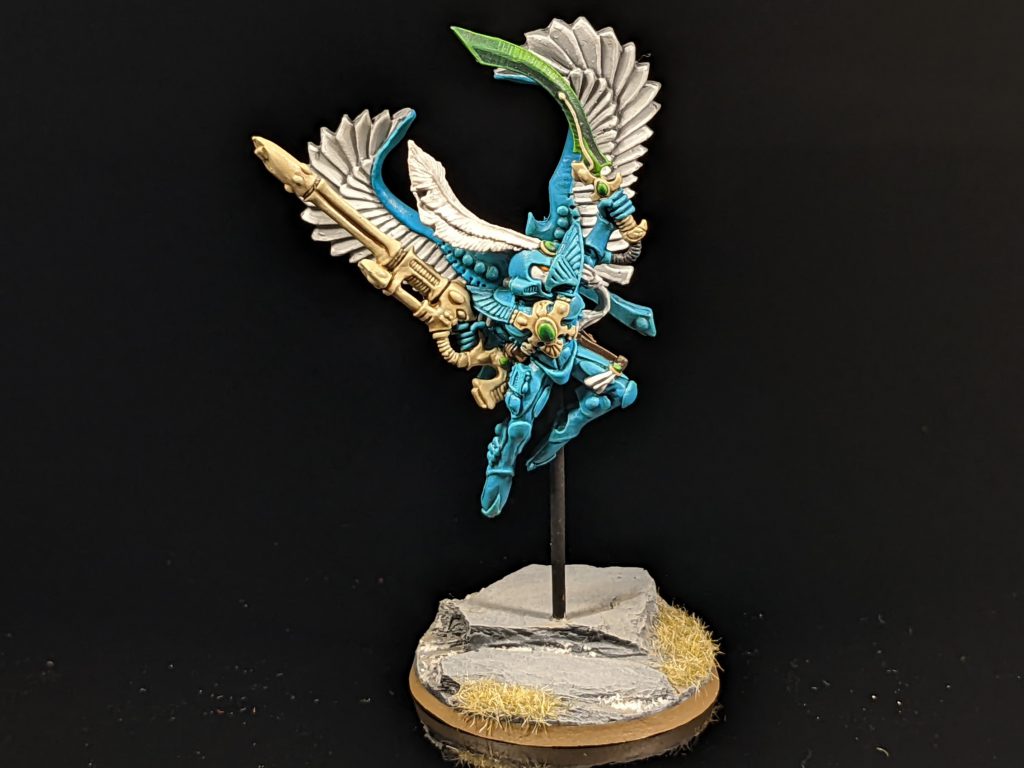
Baharroth
Bestest hawk boi no longer leaps tall buildings in a single bound but does still offer some impressive mobility tricks. He adds some decent offensive punch to a unit of Swooping Hawks, while enhancing their already fantastic mobility.
- Cloudstrider: In your shooting phase, after this model’s unit has shot, it can make a Normal Move of up to 6 inches but is not eligible to charge. This combined with the Hawks ability to go up and down every turn means that Baharroth and a unit of 5-10 Hawks is a very mobile firebase that doesn’t tap CP for Fire and Fade or Phantasm.
In combat, he is more or less good for a single unit of 5 intercessors. His gun Fury of the Tempest has 4 attacks at damage two, with lethal hits and assault, while The Shining Blade is also damage 2 and retains sustained hits. Overall, he’s a cool piece that won’t cripple enemy units by himself but will do a solid job of mopping up the leftovers. I’ve found his unit to be a little on the expensive side for its middling output and very vulnerable to indirect fire.
Boon Note: The biggest limitation to Baharroth is that you’re generally not taking Swooping Hawks for their damage output and line-of-sight survivability, but rather their scoring capabilities. As a result, Baharroth is hard to justify in your list as the min-sized Swooping Hawks are capable of doing that on their own just fine without Baharroth’s added expense.

Fuegan
The Burning Lance saw the biggest glow-up of any of the Phoenix Lords, and he is regularly seen in Super Major winning lists. He is the most durable of the Phoniex Lords with a native 5+ Feel No Pain and he’s an existential threat to anything without an invulnerable save.
- Unquenchable Resolve: The first time this model is destroyed, roll one d6 at the end of the phase. On a 2+, set this model back up on the table with full wounds remaining. A second life is just a massive headache on such an offensively powerful character. He’s a great option for trading, as you won’t lose any pieces the first time he goes down, and your opponent has to put at least two phases of damage into him. However, this does mean he counts twice against you for Assassinate, something to be wary of if your opponent takes fixed.
The real supernova of the show is Searsong, which has a dope name and two godly modes of fire. The first has 3 shots at 8/3/2 with sustained D3. A credible overwatch piece with a fate dice, Searsong can pop a unit of scouts or tactical marines without much worry. His other profile is a armor-melting strength 14 and an eye-watering Melta 6. With a fate die in your pocket, Fuegan vaporizes most 12-wound vehicles without skipping a beat. The Fire Axe is no slouch either, with an important AP-4 and damage 3, he’s an elite infantry headhunter that can take the last few wounds off a vehicle.
Boon Note: It’s actually the combat profile of Fugean that I find most intriguing. As powerful as Searsong is, it’s still subject to the same challenges as any other one-shot weapon – invulnerable saves. But in combat Fugean not only mulches most infantry, but he also tarpits a unit due to his deceptive durability, which he can then fall-back-shoot-and-charge on his next turn for a CP. He is also an intriguing option to anchor an Yncarne teleport.
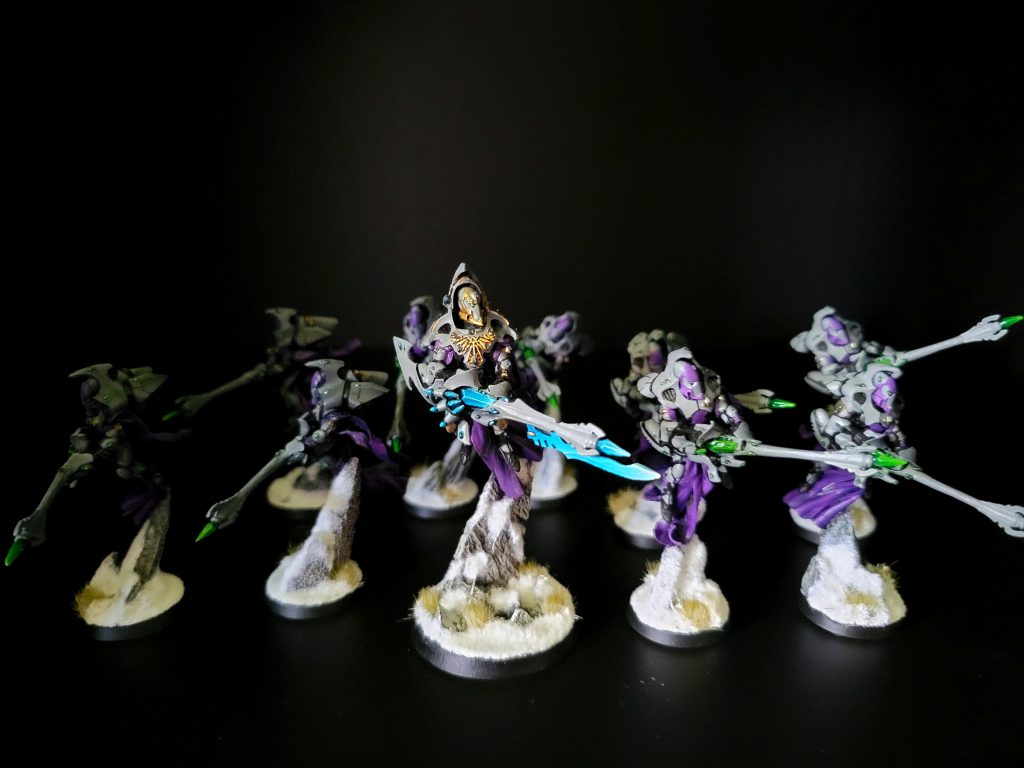
Irillyth
Boon: By the end of 9th Irillyth had carved out a little niche for himself as a relatively cost effective Phoenix Lord who was both quick, had some solid punch at range and in combat, and importantly was phase-capped like the other Phoenix Lords that combined well with his Objective Secured. As a result you had a sneaky good Phoenix Lord that paired well with Baharroth . In 10th… no such luck.
- Shadow of Death: A 6″ aura where any time a Battleshock test or leadership test is taken, he add a -1 to the result of the test. Besides the relative lack of impact that Battleshock has had on the game, there is not a world in which you really want a model this expensive and this frail within 6″ of anything that matters.
Irillyth carries the Spear of Starlight which is a confused weapon. In 9th edition it carried the power to inflict significant damage on elite infantry and vehicles but in 10th it pretty much solely focuses on elite infantry with it’s 3-shot S8 AP-2 4D profile. In combat he has a 4-attack S5 AP-2 1D profile. There are no keywords in either version. Truly a perplexing design choice. He does not synergize with his shrine and he himself is drifting through the shadows without purpose.
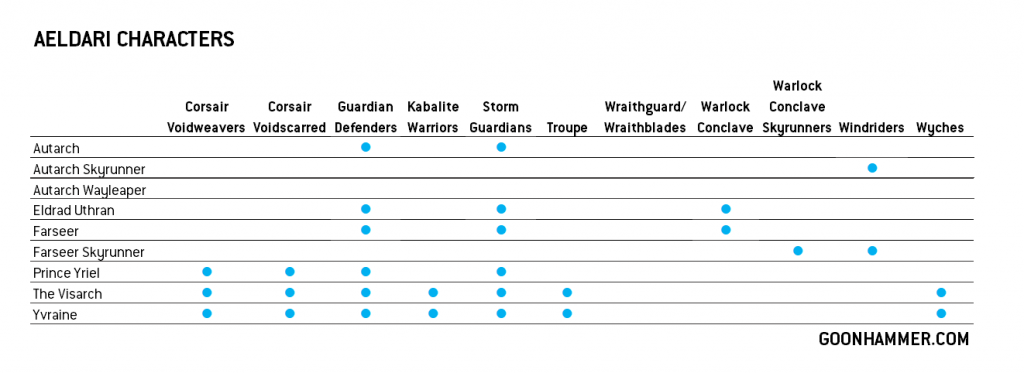
The Other Elves
With the heroes of legend out of the way, let’s dive into the more common and esoteric characters. The above chart illustrates the matrix of bodyguard options with Yvraine and the Visarch bringing in additional non-Harlequin/Aeldari options.
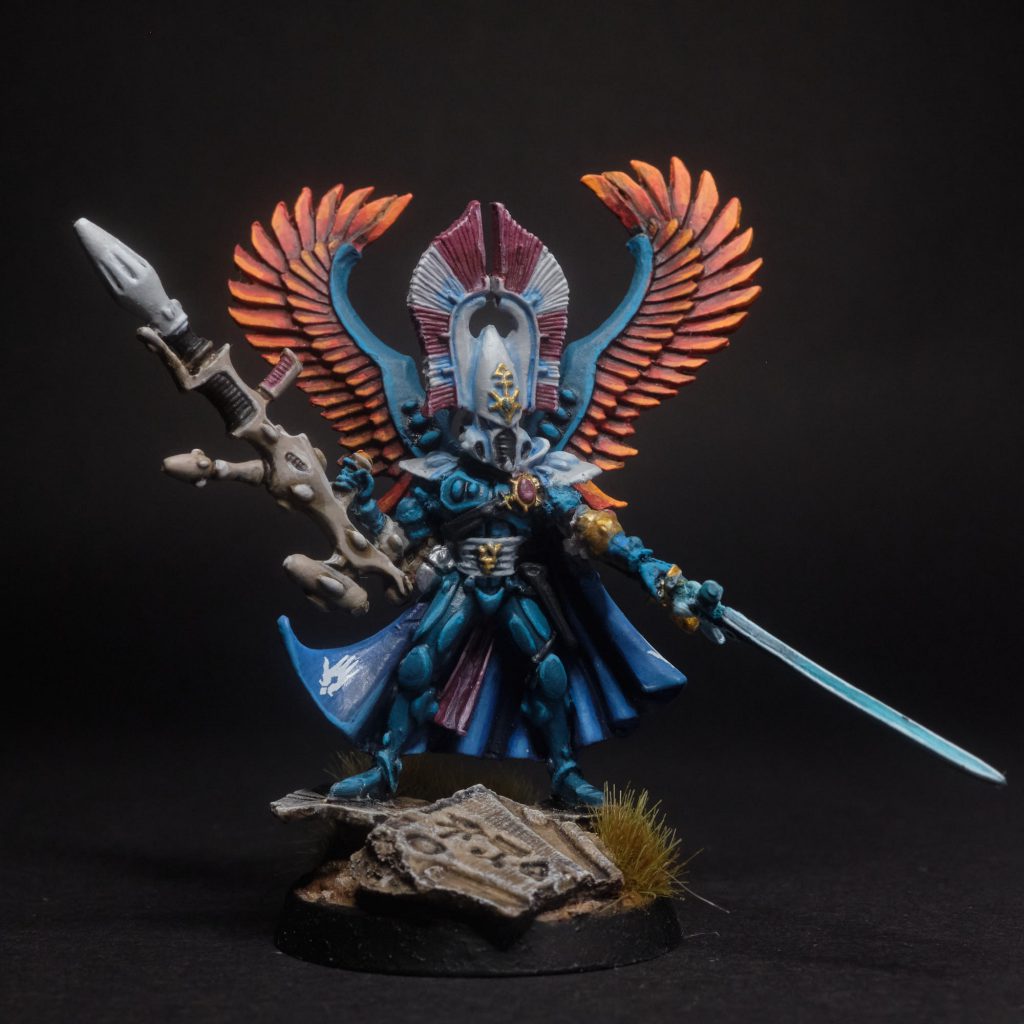
Autarch Wayleaper
The superstar character of the index, if you’re not playing Ynnari, he’s an auto-include for almost every list. Clocking in at 115 points, he’s a move 14”, flying, deep-striking, Lone-Op Infantry character with the Grenades keyword, which is almost enough to justify his points cost by itself. On top of all that, he comes with two supremely powerful abilities:
- Indomitable Strength of Will: Which gives all AELDARI units within 6 inches +1 battleshock and leadership tests. Not always relevant, as you can use Fate Dice to pass regular battleshocks and Asuryani are a leadership 6 army across the board. However, in the Tyranid matchup, his aura means that you’re incredibly unlikely to lose primary due to Shadows in the Warp as you can position 2 or 3 leadership 5 units on an objective to score primary. Additionally, his aura allows you to use 4s on fate dice to autopass battleshocks, which saves 5s and 6s for valuable save and damage rolls
- Path of Command: At the start of the command phase, gain 1CP. This ability is nuts. There’s no roll, check or requirements for the ability to trigger – it just happens. It means you can take fixed without caring about the command points whatsoever. A Lone Operative who gave you a CP every turn would probably be worth 115 on its own.
But that’s not all! The Autarch Wayleaper also has stellar options for offense. The best combination is the Dragon Fusion Gun (which gives him the notable ability to pop a CSM rhino by himself as well as the ASSAULT Keyword ) and Star Glaive, which gives him some decent punch in melee. He can either take Mandiblasters (my personal choice) for some cheeky mortals, or a Banshee Mask for First First.
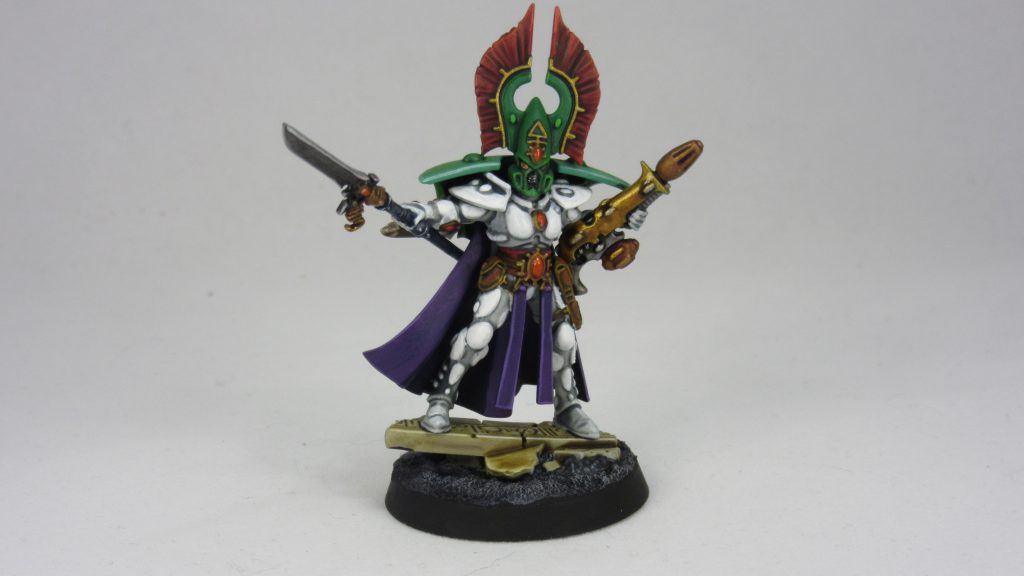
Autarch
Cheapest of the bunch at 75 points, the Autarch is similar offensively and defensively to the to the Wayleaper but loses the Lone Op rule and moves 7 rather than 14. She is restricted to joining either Guardians or Storm Guardians. Like both of her other versions, she comes with two rules.
- Path of Command: See Autarch Wayleaper
- Superlative Strategist: Once per turn, you can target this model’s unit with a Stratagem even if you have already used that Stratagem on a different unit this phase. It still costs CP. Unfortunately, Eldar’s only battle tactics are Matchless Agility and Lighting Fast reactions, and the only units this can apply to are Guardian units. Which are bad.
Overall, she’s not a bad unit. She still has a surprising amount of offensive punch, but sadly (much like the Skyrunner) she’s just outshone by the Wayleaper.
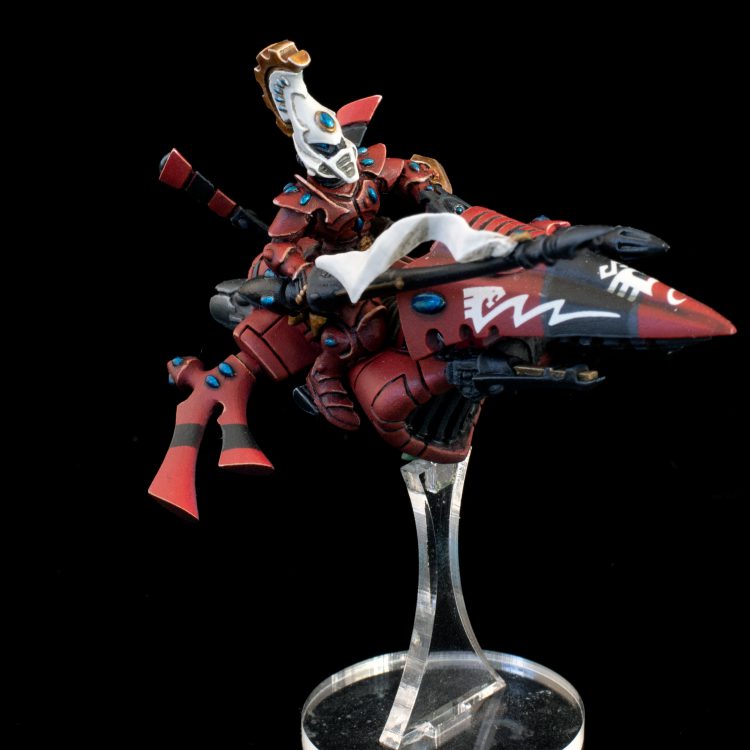
Autarch Skyrunner
The other special Autarch is a bit of a black sheep. At 90 points, he’s a bit cheaper, but his little brother shows him up in basically every capacity. Instead of being a Lone Operative, the Skyrunner gains an extra pip of toughness and OC, as well an extra wound, plus the ability to join Windrider Jetbikes (Why not Shining Spears? Please GW). He comes with two rules.
- Path of Command: Inexplicably, the non-infantry version of the Autarch has a slightly differently worded Path of Command ability which makes no distinction for the model being on the table, nor even alive for that matter.
- Ride the Wind: While he’s leading a unit, add 6 to the advance roll made for the unit. A major dud of a rule, considering his unit (windriders only) won’t have assault weapons, and Aeldari already have a strat and a Fate Dice to go 6 on an advance.
As for weapons, he can take either a Dragon Fusion Gun, Banshee Blade, or a Laser Lance. The lance is fine, but a side grade from the Starglaive. Notably, he also does not have grenades, and is Mounted rather than infantry.
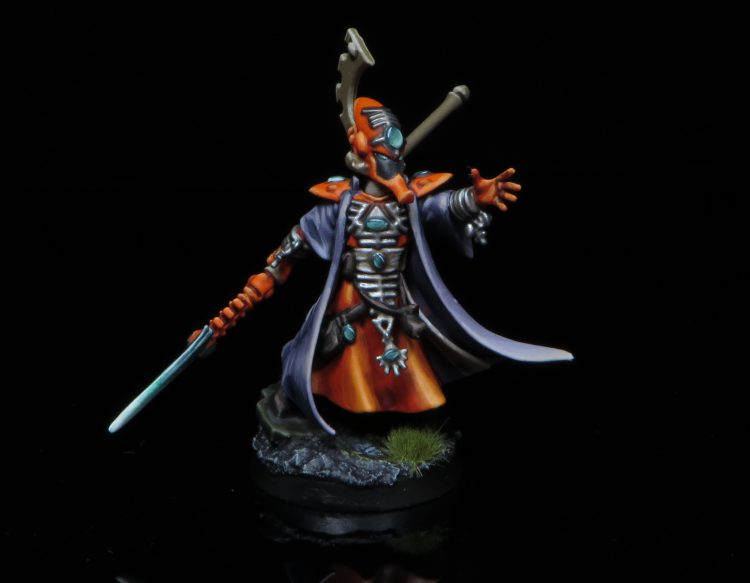
Farseer
Perhaps the most perennially evergreen unit in all of Warhammer 40,000, the Eldar Farseer has been a staple for as long as I can remember and 10th edition is no different. She’s an elf, with 4 wounds and a 4++. She’s a leader who can join Guardians of both types, as well as a Warlock conclave but mostly is run solo which means she dies to indirect fire. If you’re willing to take that risk, she’s among the best buffing characters in the entire game. She has two rules that work for your entire army.
- Branching Fates: Once per turn, when you use a Fate Dice to substitute a roll made for a unit within 12 inches, that die is counted as a 6. This ability is insanely powerful. It means that your low value dice like 1s and 2s can be used to high effect as sixes. It also means that if you’re running a unit that is hungry for sixes such as Khaine or Wraithguard you’re able to use them more effectively. Since the Farseer can flip each turn, she can potentially convert 10 of your dice to sixes if you use one to save and one for offense each turn.
- Fortune: In your command phase, select 1 unit within 12 inches and roll a die. On a 2+, that unit is -1 to be wounded. If she rolls a 1, she doesn’t bonk herself. This is an outstanding ability on very durable units like Wraithguard and the Avatar, but it also means that late game a unit of Aspect Warriors can potentially survive some chip damage that would have otherwise finished them off.
Offensively, the Farseer is better than many people give her credit. She’s got 3 weapons, a Shuriken Pistol which I’ve never shot once in my life, but has the ASSAULT and PISTOL Keywords so she can advance and do actions, as well as a Singing Spear which is flat damage 3 in both shooting and combat or a witchblade which has no ranged attack and is only damage 2 but gains Anti-Infantry 2+ in combat. The real surprise is Eldritch Storm which can rip a unit of Inceptors apart with a little luck. More than once I’ve had 3 plasma Inceptors drop into my backfield and die to the Farseer’s shooting.
Boon Note: Here I disagree a bit with Quinton on the Farseer being a staple pick in 10th. With the sorry state of Guardian units and the lack of a Lone Operative ability, the Farseer is begging to be killed by indirect fire as noted (and plenty exists across the game, including the mirror) or becomes a resource investment to keep alive. Units that are so reliably countered I personally steer clear from in my game planning.
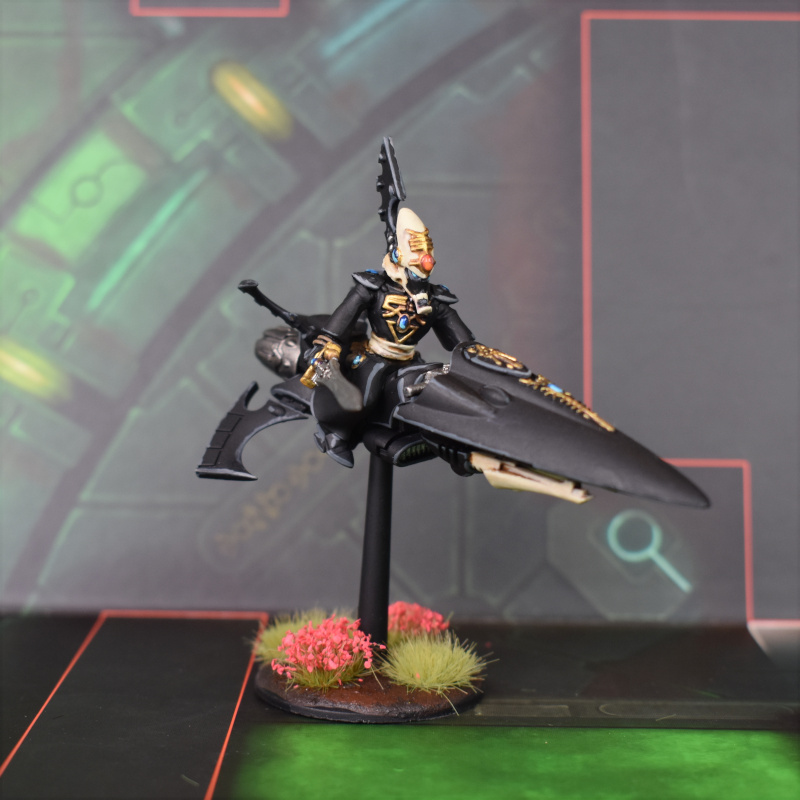
Farseer Skyrunner
A Farseer on a bike! He carries a lot of the same abilities as the foot Farseer. A little more expensive, but gains 7 inches of movement, a pip of toughness, a wound, and a 3+ armor save which means he sometimes doesn’t die from indirect fire. The Skyrunner can join both Windriders (which he actually likes joining and aren’t a bad unit) and the Warlock Skyrunner conclave (by far the worst unit in the book, second only to perhaps the foot Warlock Conclave). Like his walking iteration, he comes with two rules.
- Branching Fates: Same as the foot Farseer.
- Guide: Select a unit, roll a 2+, they get full rerolls to hit. I’m a little unique amongst Aeldari players in that I prefer Guide over Fortune because I play the game like a pansy chicken and my units tend not to die when they’re hiding in my corner. Guide is a spell that does require a unit that wants it, as a lot of Aeldari units already have a hit reroll for their low volume of shots. But if you’re running Nightspinners and Wraithguard, or something like a big unit of Striking Scorpions or Swooping Hawks that really want the efficiency of hit rerolls, he’s worth the points.
Clocking in with a hilarious four separate guns, the Farseer Skyrunner rides into battle like an arcane mall ninja. He’s got the spear (or Witchblade), pistol, and Eldritch Storm from the walking version, but also picks up a twin Shuriken Catapult that I once had take the last wound from Belakor. Adding him to a unit of Windriders does give him full rerolls to hit against units on objectives, which is occasionally really useful.
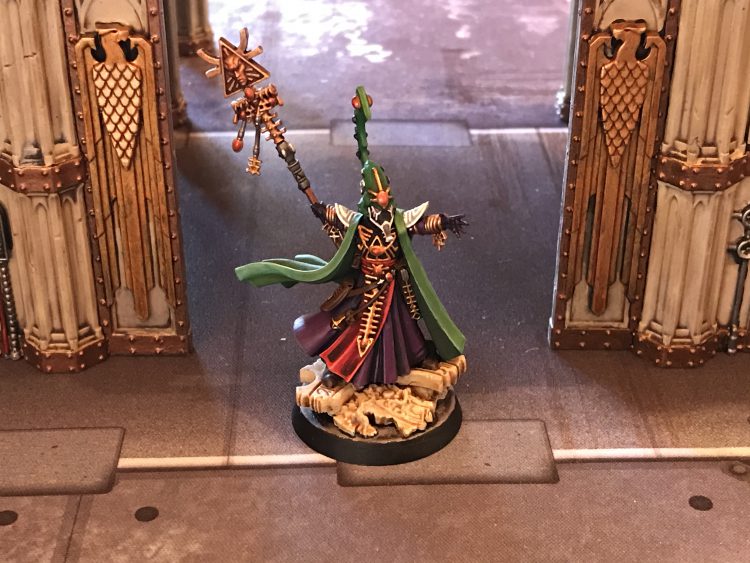
Eldrad Ulthran
The Ul(thwe)timate silver fox has been reading the runes since before the Horus Heresy, and he’s got a lot to say about them. Unfortunately, he also lost some of the cooler Farseer abilities for a unique power that’s… fine? He’s a leader that can join Guardians and the Warlock conclave.
- Diviner of Futures: At the start of the battle, when making your first strands of fate roll, roll 3 additional d6s. An awesome rule when fate dice were spent like lives on an imperial war front, but much less good now that you’re limited by the number of dice you can use per turn. I rarely run out until very late in the game and usually have 1 or 2 at the end. Some TO rule decisions won’t let you reroll his 3 dice, which can get a little complicated to track at the start.
- Doom: Start of the shooting phase, select one visible enemy unit within 18” and roll a D6. On a 2+, your army is +1 to wound against that unit. A very cool ability in theory that is hard to execute on the table. Eldrad is a squishy elf and the fact that Doom requires line of sight and to be within threat range of most units means he’s not reliably going to get a second use before he’s destroyed.
- Branching Fates(?): Very technically, Eldrad can use Branching Fates as long as another Farseer is on the table since that rule is keyed of “a Farseer model from your army” and Eldrad has the Farseer Keyword. However, I think this is a weird rules interpretation and personally don’t do it. Ask your TO however, you may find a different rules interpretation. You’re also not very likely to be taking both a stock-standard Farseer and Eldrad.
Offensively, Eldrad has a Shuriken Pistol and Mind War, which both he and Ahriman decided was better than the good spells that their faction’s ‘lesser’ psykers know. It’s one shot with precision and anti-character, but not devastating wounds. If I could swap this out for Eldritch Storm, I’d do so in a heartbeat. Staff of Ulthamar and Witchblade is slightly better than another Farseer in combat, but still won’t do much.
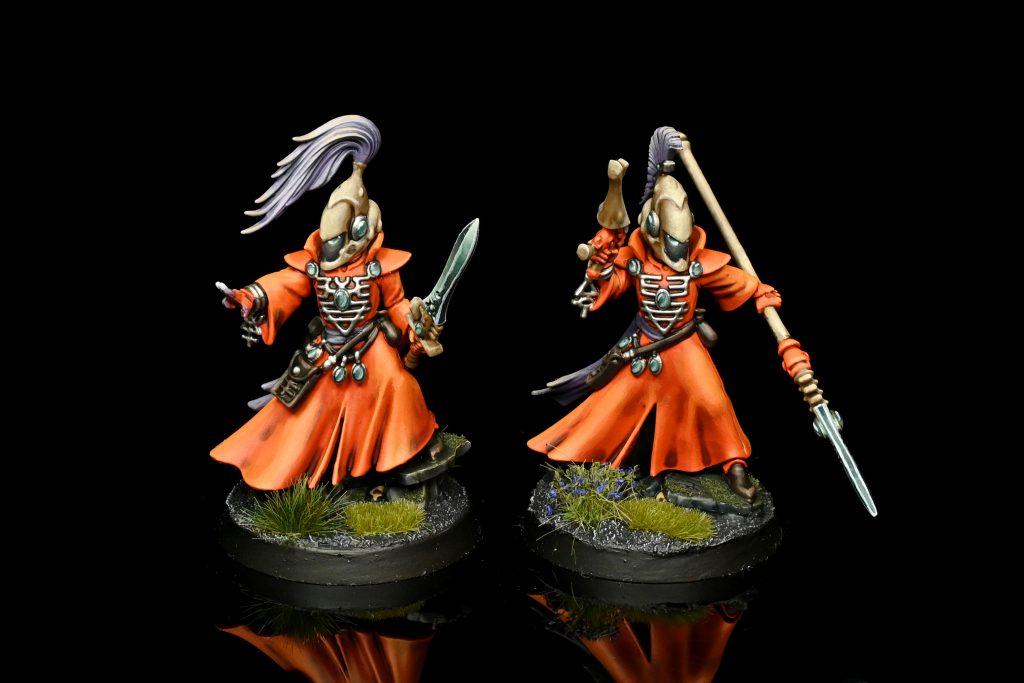
Warlock
Standing neatly a full inch over the Farseer, this dude’s model certainly ate his Wheaties. His rules did not. He’s a Leader who can join Guardians, and can do so even if a Farseer is already in the unit. Notably, he is the cheapest unit in the entire book at 45 points and sometimes the solo Warlock is the only thing that will make a list fit. Finding the extra 10 points for rangers though is usually better since they don’t give up the Assassinate secondary.
- Runes of Fortune: Pick one of the following in the command phase to apply to the unit: auto-advance 6″ or limit opponent charges by 2″
These abilities are fine? Like the Skyrunner, Eldar already have the ability to auto advance so this ability doesn’t do much. The -2 to charge is cute, but you have to take Guardians to get any real value out of it. He’s got a singing spear or Witchblade, a shuriken pistol and Destructor which is just a psychic heavy flamer. Maybe he gets lucky and kills 1 space marine.
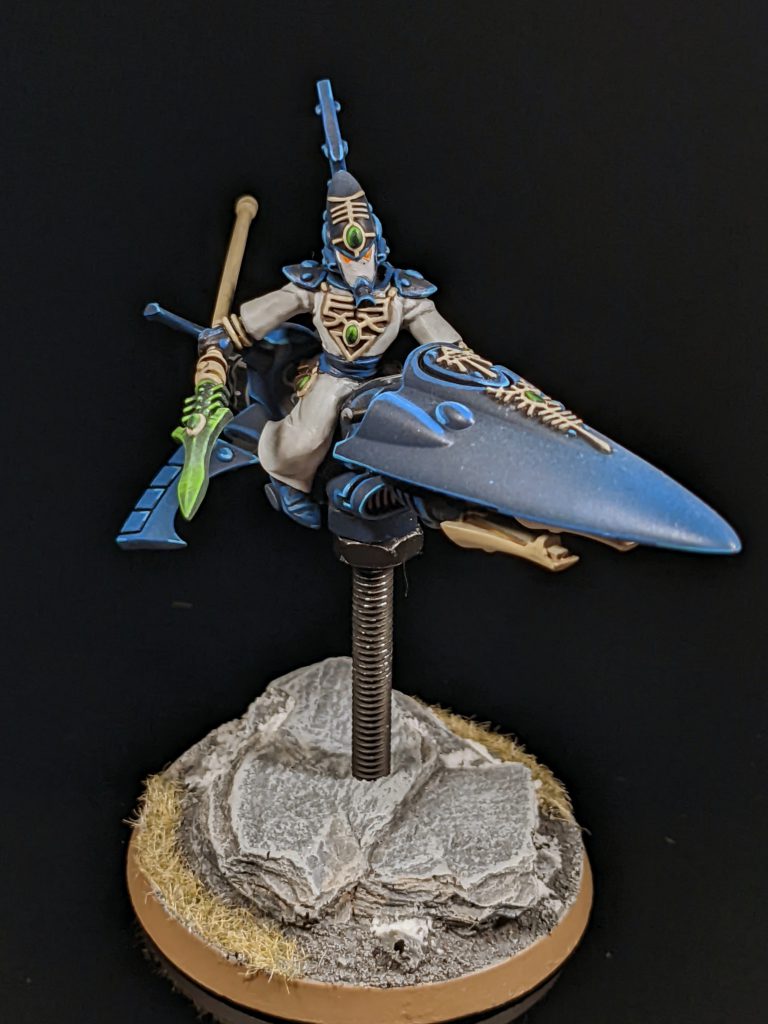
Warlock Skyrunner
The Chad Skyrunner takes the edge over the Warlock on foot thanks to the fact that he can join a good(ish) unit in the form of Skyrunners. Like all the bike characters, he gets some minor stat improvements and a slight point bump.
- Runes of Battle: Pick one of the following in the command phase to apply to the unit: models in the unit gain Stealth or ranged weapons gain Ignore Cover
You’ll probably end up going with ignores cover most of the time, since he’s going to be joining a unit of Windriders who really enjoy that with their AP1 Shuriken Cannons. Offensively he’s the same as the Foot Warlock but gains a twin Shuriken Catapult.
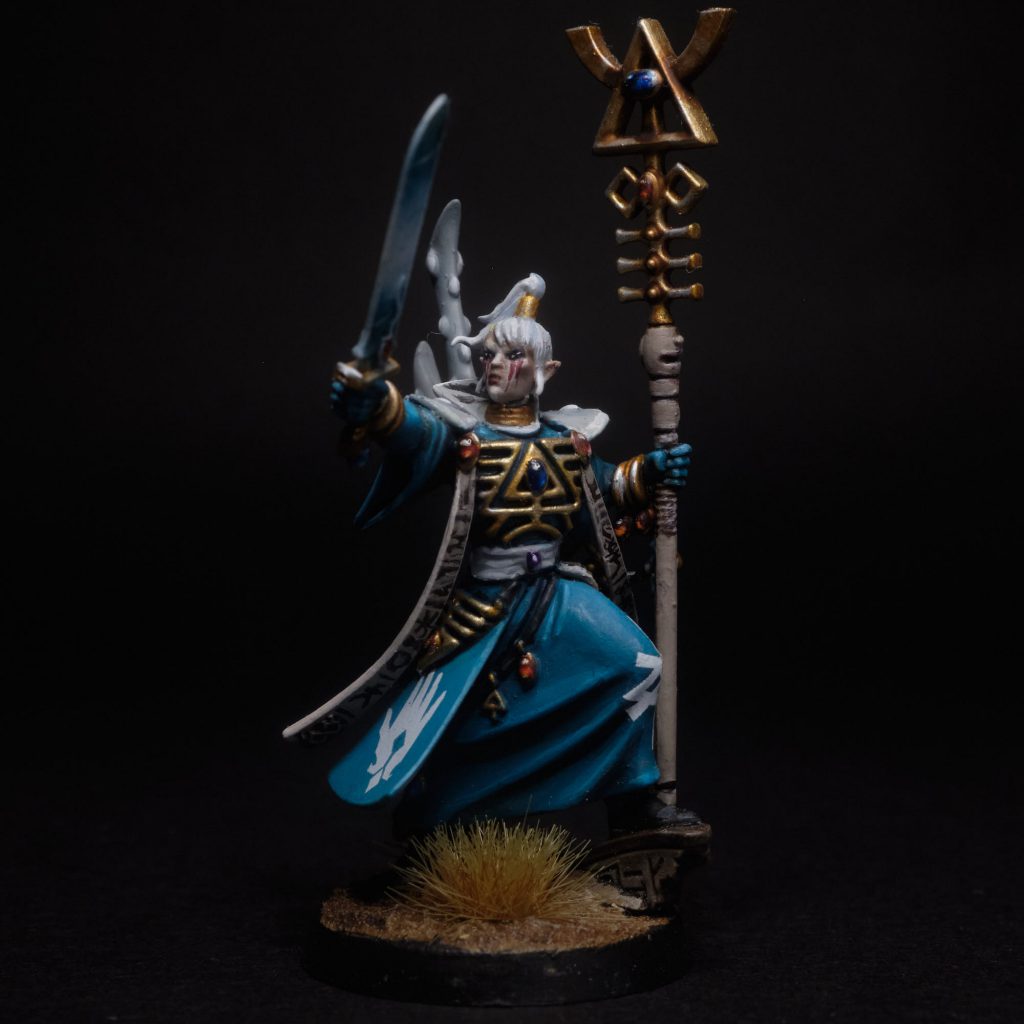
Spiritseer
She protec, She attac, but she also holds Fate’s Messenger for your Wraithguard. A purely buff character that is worth every cent of her 65 points, the Spiritseer is worth it for the buffs she gives Wraithguard alone. Good thing they lend her their T7, since she’s got 3 wounds at T3. She can also join Wraithblades and Wraithlords, but why would you want to do that?
- Spirit Mark: Her unit gains Lethal Hits and has +1 to hit. This is an outstanding rule that really enhances the damage and reliability no matter the weapon option
- Tears of Isha: In your command phase, you can return 1 model to her unit. Amazing on durable wraith guard and wraithblades, sadly useless on Wraithlords.
Offensively the Spiritseer does next to nothing, although her Shuriken Pistol has claimed both a tetra and a broodlord in my games. More importantly, its assault and pistol keywords let her unit do actions whenever they want.
Prince Yriel
With the power of God and Anime on his side, nothing can stop the prodigal son of Iyanden, except maybe his own rules. They aren’t stellar. At least he can join Corsairs of both types in addition to guardians.
- Hero of Iyanden: His unit gains +1 OC. Not bad, but elf infantry is squishy and liable to get shot off a point.
- Prince of Corsairs: Redeploy up to three units. It’s the bad kind however, done before you know who goes first.
His Eye of Wrath is trolling at damage 2, but not actually that good. The Spear of Twilight isn’t actually that bad with 5 attacks at damage 3. Overall, he’s just not worth taking over the Wayleaper, which is a sad reality of many of the characters on this index.
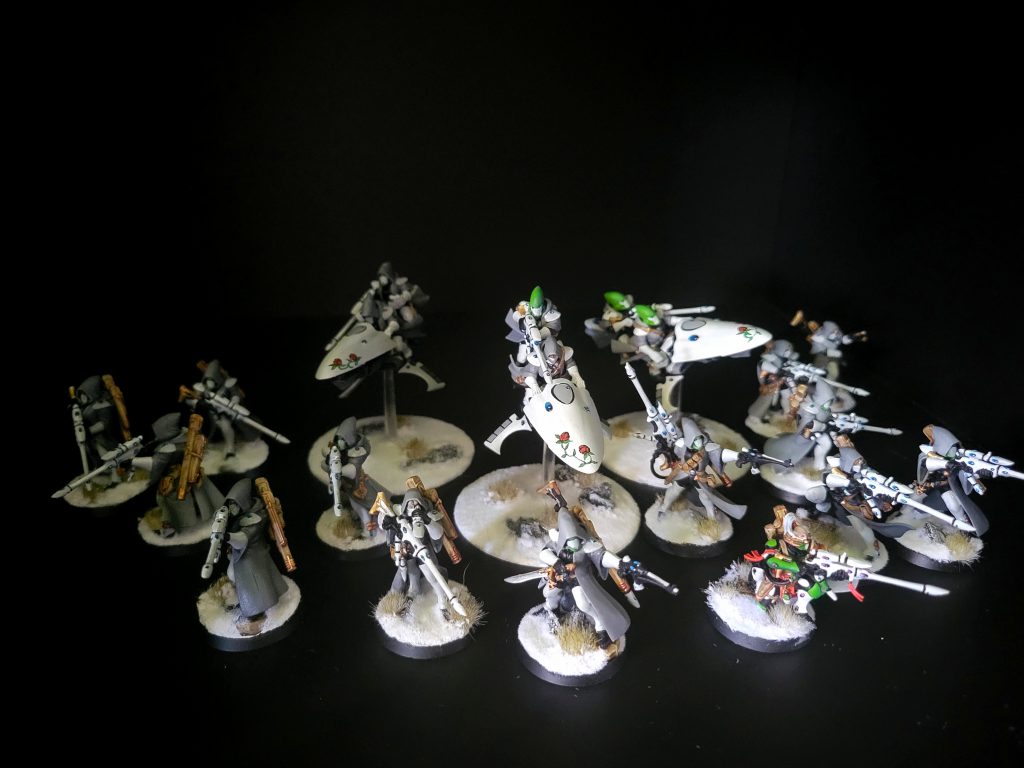
Illic Nightspear
A perpetual thorn in your opponent’s side, Illic exists in a weird state of being theoretically invincible and practically squishy. He’s just an elf with a 5++ and stealth, but he’s got an interesting suite of rules for 70 points.
- Bringer of True Death: While he’s leading a unit, that unit has full rerolls to wound. This makes a ten man unit of rangers a terrifying threat to characters across the game.
- Hunter Unseen: His unit gains Lone Operative. When used in conjunction with Rangers inherent ability to move when an enemy gets close, as well as Phantasm they should never be targetable by an attack. But I often find this unit is clunky and that my Wraithguard are getting phantasm every turn. Not bad in an MSU style list, but not nessesary everywhere.
The Voidbringer is one heck of a sniper, with damage 3, Devastating Wounds, Heavy and Precision. The ability to clean clock on any 3 wound character (Marshalls, Spiritseers, etc) with a 6 on the wound or a fate dice is really useful sometimes.
Boon Note: While I haven’t used Illic in every one of my lists, he’s in most. Combined with Rangers he’s one of the best screening units in the game, and while the output on Rangers can be anemic at times, the combination of full wound rerolls and Precision can still be incredibly effective and more importantly (in my opinion), utilitarian. While Quinton is correct that Wraithguard usually see the benefit of Phantasm and Illic suffers as a result, it’s important to remember that Wraithguard are not required to build a competitive and winning list.
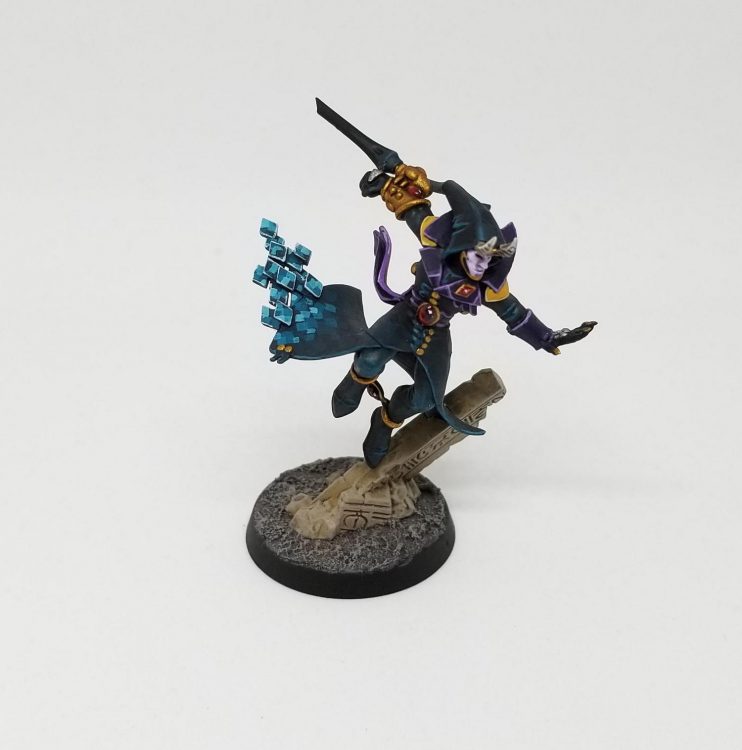
Solitaire
the angstiest Epic Hero in 40k blitzes onto the battlefield with a potent mix of rainbows, My Chemical Romance, and death. They’re fast enough to outrun anything but Aircraft and their edgy past. A potent character assassin and blistering Lone Operative, the Solitaire’s 3++ obscures the fact that the model has toughness 3 with 3 wounds. They die to explosions and lasguns far too often for a 115-point model. That being said, 12” Movement base and Fights First means the Solitaire is usually able to hide until it’s time to strike, but they never get to make a second pass.
- Blitz: Once per battle, add 2d6 to the distance the Solitaire can move, and add 3 to the attacks characteristic of his weapons. Amazing. Pop this on the turn he dives for your opponent’s Warlord and tear them apart with an outstanding 12 attacks.
- Blur of Movement: This model can advance and charge. I’m not sure where this rule is supposed to exist, since you’re going to blitz the turn you dive, and he’s a fire and forget unit. There is no second turn for this guy.
In combat, the model’s Solitaire Weapons gives them 9 attacks (12 when Blitzing) at 6/2/2 with native [PRECISION]. That’s usually more than enough to kill a marine character with room to spare, or to ice a squad of medium infantry. Barreling a Solitaire out of a Falcon is surprisingly effective way to get them to dance with light vehicles or monsters.
Boon Note: This is another case where Wraithguard can really suck the oxygen out of the room on unit options. The Solitaire, owing to its speed and Lone Operative, can be an incredibly flexible unit that loves a good Phantasm to keep itself tucked away in a ruin where it leverages its Fight First and strong combat profile. He is also an excellent tool to put an Yncarne into position once your opponent figures out how to dig him out.
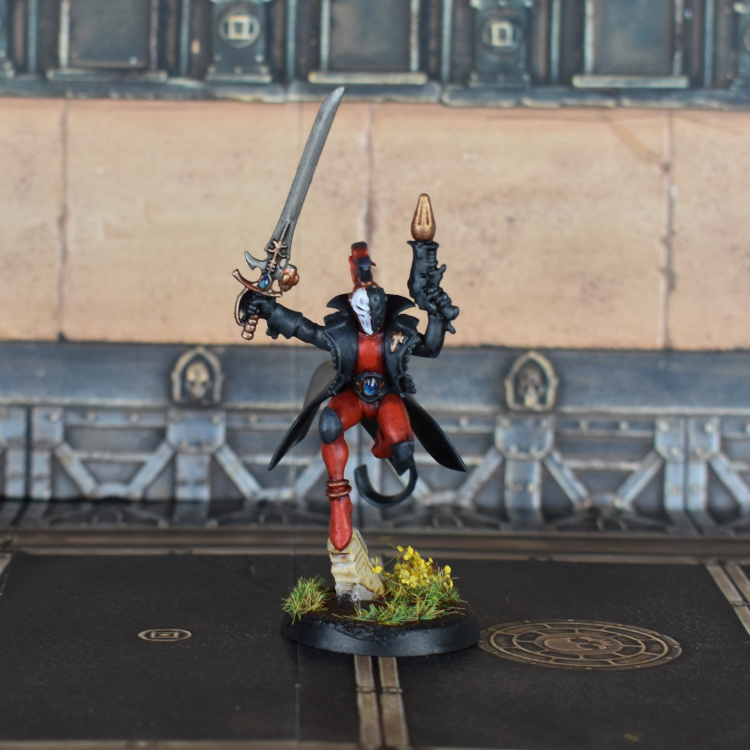
Troupe Master
This guy is no laughing matter. He is decidedly lukewarm, however. A leader who can join Troupes, this guy lost a lot of his 9th edition groove in exchange for a lower price tag and some tepid weapon options.
- Choreographer of War: While this model is leading a unit, that unit has Devastating Wounds in melee.
- Cegorach’s Favor: Once per turn when you use a Fate Dice to substitute a hit roll, wound roll or saving throw for this model, you can change the result to a six. Sadly this only works on a few things, and it only works on the troupe master himself, not the unit he’s attached to.
- While he’s your Warlord, Troupes are Battleline. Not bad if you’re trying to be fluffy with a pure Harlequin army
The Troupe Master has a few options for weapons, but he’s best given a Fusion Pistol and Troupe Master’s Blade which gives him one okay Melta shot at D3 damage and a few anti-infantry attacks in combat.
Please GW, I want A Foot in the Future back. Who do I need to pay for Codex:Harlequins?
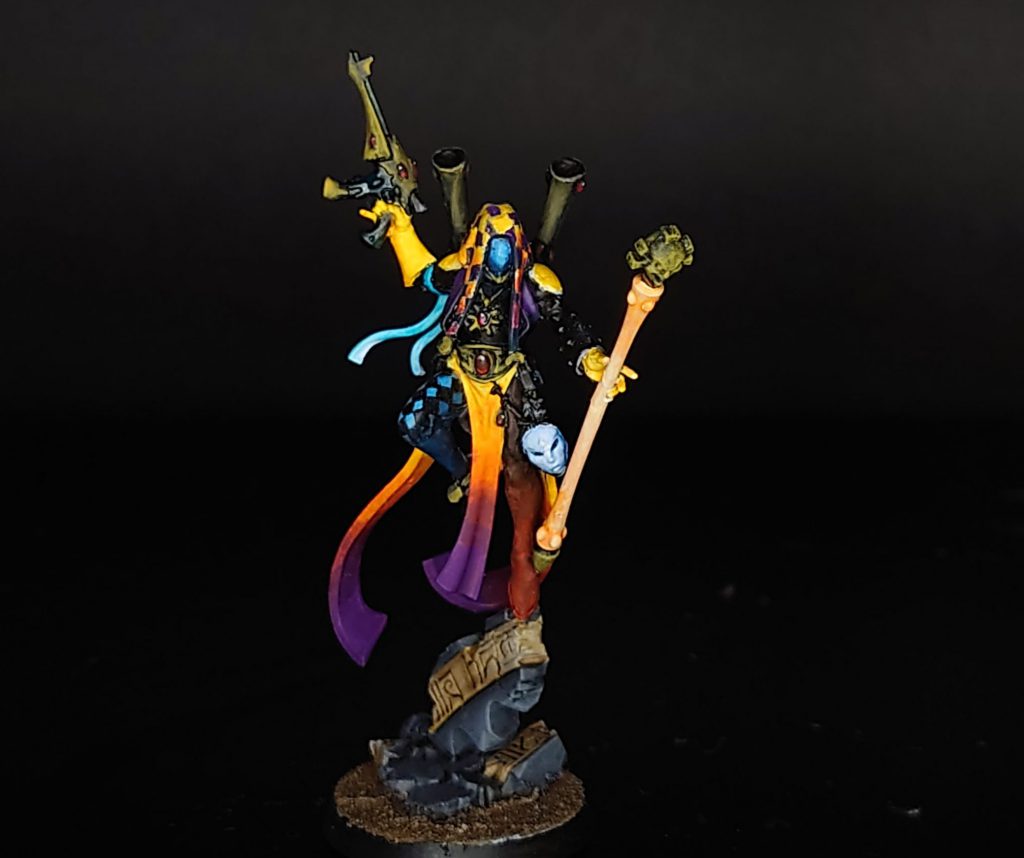
Shadowseer
A far cry from her Farseer cousins, the Shadowseer is hampered by her ability to only join Troupes and her lack of ability to influence Fate Dice. Her abilities are cute, but Troupes often want a Troupe Master to help make up for their low base damage output.
- Fog of Dreams: Her unit gains Stealth
- Twilight Pathways: One Shadowseer from your army, and their unit, is eligible to advance and charge, as well as reroll advance rolls. This ability is fine, although the second part is a little superfluous. Frankly, Troupe’s issue isn’t getting to combat, it’s doing damage when they arrive.
She has a Neuro Disruptor or shuriken pistol, both of which do nothing aside from being assault pistols, as well as a Miststave that gives her the dubious honor of being one of the best elf psykers in combat.
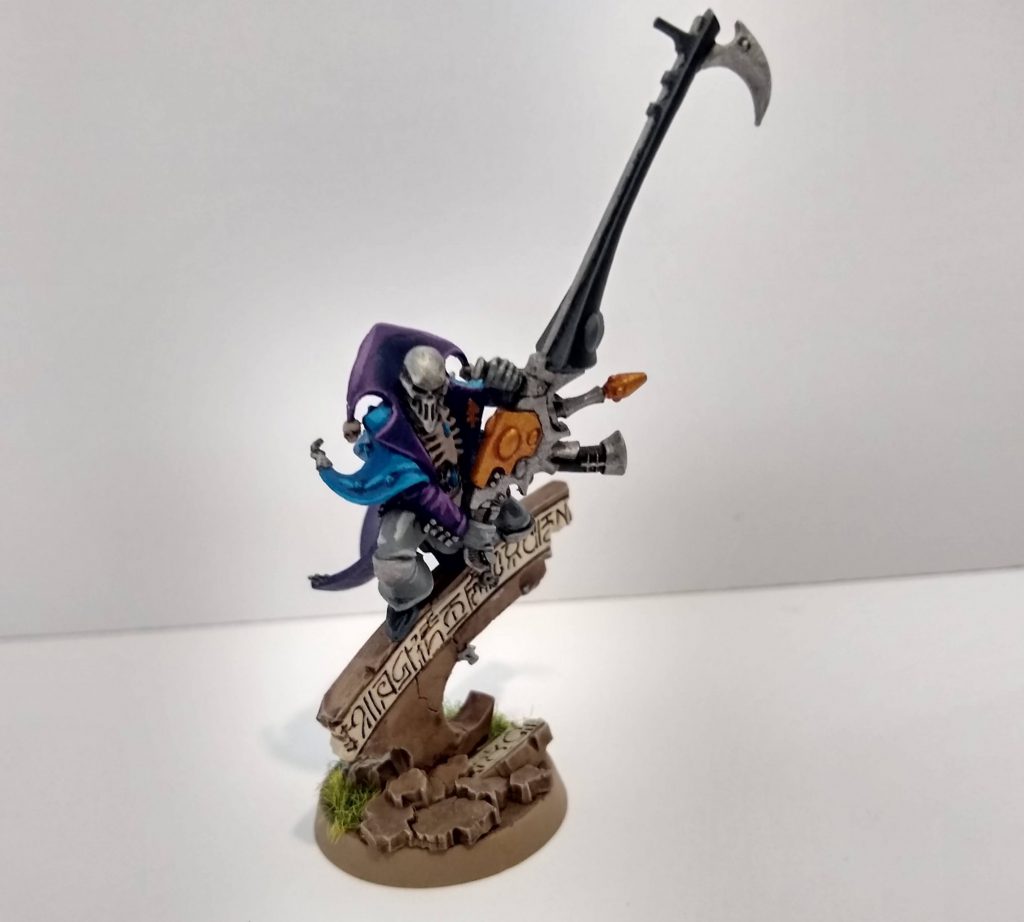
Death Jester
Death is not enough for this macabre Lone Operative, but apparently he’s too much of a diva to want to share the limelight. He’s got 4 wounds, which is strange considering the Solitaire has 3, but otherwise isn’t too different from other elf Lone Operatives.
- Death is Not Enough: In your shooting phase, after this model has shot, if one or more of those attacks destroyed an enemy model, that unit must take a battle shock test. Not bad if you’re also adding in Void-Weavers and forcing a ton of Battle Shocks.
- Cruel Amusement: In your shooting phase, one Death Jester can select one of the following: Ignores Cover, Precision, Sustained Hits 3
You’re always going to take the Sustained Hits 3, unless you really need a character dead. The annoying part is that only one Death Jester is able to pick an ability, regardless of how many you have in your army.
His Shrieker Cannon isn’t a bad gun with Sustained Hits 3, but without it, it’s just a Shuriken Cannon with Devastating wounds. I’ve found his damage to be a little on the soft side, and since he doesn’t have Precision base anymore, it just bounces off the armored front of a unit.
Boon Note: The Death Jester is another unit that takes a backseat to a Wraithguard build, but specifically in this case the Spiritseer. On it’s own the Death Jester isn’t much to write home about, however, given Fate’s Messenger and he transforms into an incredibly flexible utility piece owing to his Lone Operative and guaranteed devastating wounds – combined with the Aeldari reroll and Sustained Hits, he stands a good chance of doing considerable damage to any unit in the game that doesn’t carry damage reduction. The enhancement also makes him FAR more deadly at character hunting and can combine his innate ability with a Fate dice to drop a minimum of 4 devastating wounds on any target. He’s my favorite unit and I include him in every list that doesn’t contain Wraithgaurd.
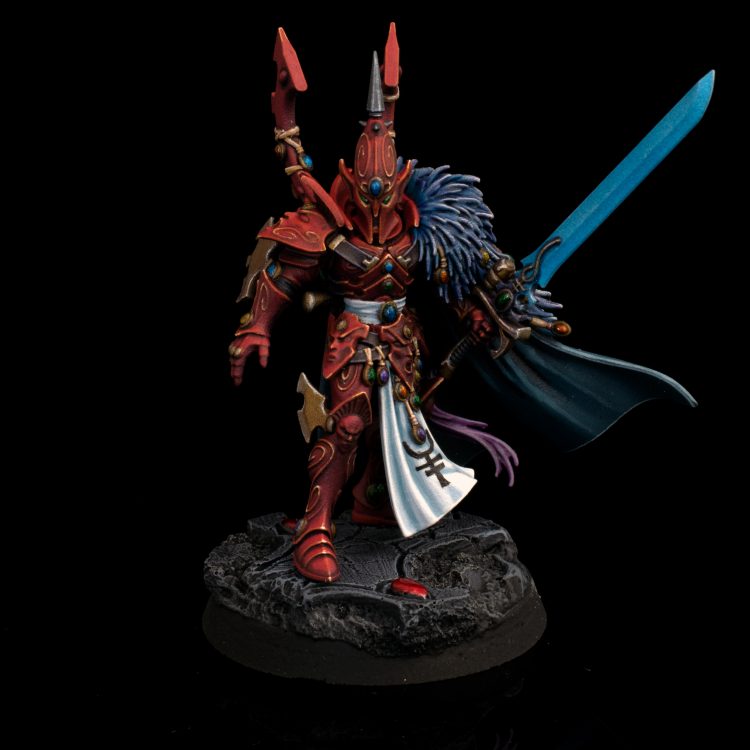
The Visarch
The ultimate simp, this Epic Hero can Lead Corsairs of both flavors, Guardians, Kabalites, Troupes and Wychs in addition to Yvraine. Astoundingly, there isn’t a unit in there that really wants him. He’s not awful by himself, but he’s just a dude that walks around and hits stuff with an okay sword.
- Way of the Blade: His unit gets fights first. This is fine? It’s not as devastating as it could be if he could join a terrifying combat unit, but this mostly is here for himself, but only works while he’s leading a unit
- Champion of Ynnead: Each time he’s selected to fight, he gains one of the following abilties: Sustained Hits 2, Devastating Wounds, Lethal Hits
These are nice damage boosts, but they’re more cute than relevant. Asu-Var, the Sword of Silent Screams, comes with native precision and AP-4, but with only 5 attacks at strength 5, he’s not actually that scary. He’ll kill a few space marines, but other elf combat characters do that far better.
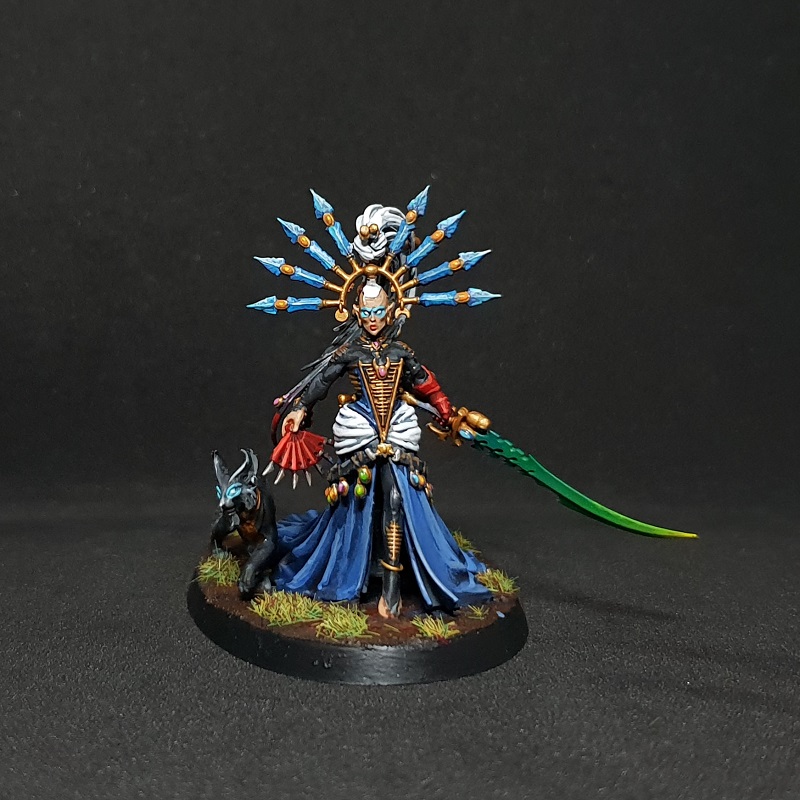
Yvraine
Guilliman’s Waifu might have the best headpiece of any warrior in the 41st millennium (Boon Note: if it doesn’t immediately shatter during painting). She’s got a lot going for her in the unlocking of Drukhari units for your Ynnari army. Like the Visarch, she can join a wide variety of Drukhari and Asuryani units. You’d probably take her in most lists, but she competes with the Autarch Wayleaper in that they both have to be your Warlord. Like her competitor, she does have Deep Strike, so the solo-Yvraine bomb isn’t a terrible idea. Sadly, the cat doesn’t have rules.
- Herald of Ynnead: While this model is leading a unit, that unit has a 5+ Feel No Pain. Not bad on a big unit of Troupes or Kabalites.
- Word of the Phoenix: While this model is leading a unit, you can roll a d6 in your command phase. On a 2+, return D3 bodyguard models to that unit. Also not bad on Troupes. But most of the time the 5+ Feel No Pain and the returned models aren’t going to matter because at toughness 3, 1 wound, and mediocre saves – they’ll all be dead.
In melee, she’s rocking Kha-vir, the Sword of Sorrows which is a cute power sword with devastating wounds. Her gun, Storm of Whispers, is what Eldrad wishes he had with D6+3 shots with Anti-infantry 2+ and Devastating Wounds.
Final Thoughts
Boon: Aeldari are chock full of interesting options in the Epic/Hero slots and while not all of them are winners in the index, the sheer range of options available means that you can create a number of different looks based on what you’re interested in building around. In terms of optimization, there tends to be a few clear choices, but in terms of fun and interesting gameplay the set widens considerably. Still one hopes that when the time for the codex to release rolls around, units like the flavors of Autarch, a few of the Phoenix Lords, Warlocks, Eldrad, etc will get some revisions along with their respective bodyguards that give them more of a purpose in function. Until then, windmill slam that Autarch Wayleaper on the table and prosper!
Have any questions or feedback? Drop us a note in the comments below or email us at contact@goonhammer.com.
Interested in more from Quinton? You can find more great content from him and the rest of the Art of War team over at the War Room.
